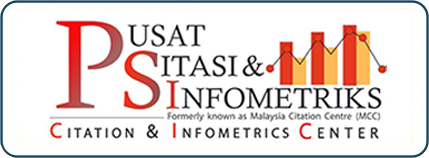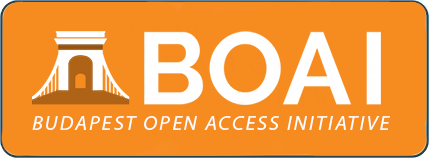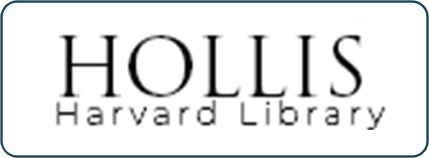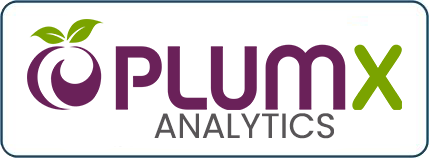Accounting Ethics Education on Ethical Behaviour of Accounting Graduates in Malaysia
DOI:
https://doi.org/10.33102/jmifr.503Keywords:
Accounting ethics education, Ethics courses, Teaching styles, Ethical behaviourAbstract
The rising corporate scandals caused by unethical accountants have concerned various parties, especially the stakeholders. These scandals, whether in public or private sectors, will impact the economy and reputation of a country. Therefore, the role of ethical accountants in providing reliable information for decision-making is a very crucial and should be addressed seriously. Thus, the education sector is believed to be one of the ways to produce graduates with good technical skills, knowledge, and high morality to make the best judgement for society. The research is conducted to assess the influence of accounting ethics education (ethics courses and teaching styles) on the ethical behaviour of accounting graduates in Malaysia. This study uses questionnaire which distributed to accounting graduates from MIA-accredited universities. 70 usable responses were received and PLS-SEM is used to analyse the data. This study found that teaching styles used in teaching ethics courses have a positive and significant relationship on the ethical behaviour of accounting graduates in Malaysia. However, ethics courses offered in the accounting program at the university was found not be significant. thus, it is suggested that lecturers need to use various methods of teaching in delivering ethics courses to enhance the ethical behaviour of accounting graduates in Malaysia.
Downloads
References
Abdul Aziz, N. M., & Ahmad, F. A. (2019). The Islamic Moral Responsibility and Sustainable Social Engagement in Islamics Institution. International Journal of Islamic Economics and Finance Research, 45-61.
Abdul Rahman, A. R. (2003). Ethics in Accounting Education: Contribution of the Islamic Principle of Maêlaîah. Journal of Economics and Management, 1-18.
Abuznaid, S. A. (2009). Business Ethics in Islam: The Glaring Gap in Practice. International Journal of Islamic and Middle Eastern Finance and Management, 2(4), 278-288. doi:10.1108/17538390911006340
Alani, S. F., & Alani, H. K. (2012). The Role of Islamic Ethics in Accounting Environment. Journal of Business and Management, 26-30.
Alawneh, S. (1998). Human motivation: an Islamic perspective. American Journal of Islamic Social Sciences, 15(4), 19-39.
Al-Banna. (1940). Messages’ Group of Imam Hasan al-Banna a (1st ed.). Alexandria: Darul Al-D’aoah Publication.
Ali, A., & Gibs, M. (1998). Foundation of Business Ethics in Contemporary Religions Thought: The Ten Commandment Perspective. International Journal of Social Economics, 25, 1552-1564.
Al-Okaily, M., Alqudah, H., Matar, A., Lutfi, A., & Taamneh, A. (2020). Dataset on the Acceptance of e-learning System among Universities Students’ under the COVID-19 Pandemic Conditions. Data in Brief, 1-5.
Arham, M. (2010). Islamic Perspectives on Marketing. Journal of Islamic Marketing, 149-164.
Aruwa, S. A. (2005). The Business Entrepreneur. Kaduna, Nigeria: Academy Publication.
Barrock, J. (5 July, 2021). The Drama at Serba Dinamik Continues. Retrieved from The Edge Markets: https://www.theedgemarkets.com/article/drama-serba-dinamik-continues
Baud, C., Brivot, M., & Himick, D. (2019). Accounting Ethics and the Fragmentation of Value. Journal of Business Ethics.
Blanthorne, C., Kovar, S. E., & Fisher, D. G. (2007). Accounting educators’ opinions about ethics in the curriculum: an extensive view. Issue in Accounting Education, 22(3), 355-390.
Bowden, P., & Smythe, V. (2008). Theories on Teaching & Training in Ethics. Electronic Journal of Business Ethics and Organization Studies, 19-26.
CFO Innovation Editors. (30 January, 2019). The World’s Biggest Auditing Firm Fined for Breaches Linked to Malaysia’s 1MDB. Retrieved from CFO Innovation: https://www.cfoinnovation.com/accounting-compliance/world-s-biggest-auditing-firm-fined-for-breaches-linked-to-malaysia-s-imdb
Chen, H., Ponniah, K., & Mayuri, M. L. (9 August, 2019). 1MDB: The playboys, PMs and partygoers around a global financial scandal. Retrieved from BBC News: https://www.bbc.com/news/world-asia-46341603
Chin, W. W. (1998). The partial least squares approach to structural equation modeling. Modern Methods for Business Research, 295–336.
Christensen, A., Cote, J., & Latham, C. K. (2018). Developing ethical confidence: The impact of action-oriented ethics instruction in an accounting curriculum. Journal of Business Ethics, 1157–1175.
Clausteir, M. W., & Underdown, B. (2002). Accounting Theory and Practice. (8th ed.). Harlow, England: FT Prentice Hall.
Cohen, J. (1988). Statistical Power Analysis for the Behavioral Sciences: Lawrence Erlbaum Associates.
Davis, J. R., & Walton, R. E. (1991). Professional Ethics: Business Student's Perception. Journal of Business Ethics, 451-463.
Davis, J. R., & Welton, R. E. (1991). Professional Ethics: Business Students' Perceptions. Journal of Business Ethics, 451-463.
Douglas, P. C., Davidson, R. A., & Schwartz, B. N. (2001). The Effect of Organizational Culture and Ethical Orientation on Accountant's Ethical Judgments. Journal of Business Ethics, 34, 101-121.
Earley, C. E., & Kelly, P. T. (2004). A Note on Ethics Educational Interventions in an Undergraduate Auditing Course: Is there an ‘Enron’ Effect? Issues in Accounting Education, 53-71.
Fornell, C., & Larcker, D. F. (1981). Evaluating structural equation models with unobservable variables and measurement error. Journal of Marketing Research, 39–50.
Frederick, W. (1998). One Voice?, Or Many?: A Response to Ellen Klein. Business Ethics Quarterly, 575-579.
Fritzsche, D. J., & Oz, E. (2007). Personal Values' Influence on the Ethical Dimension of Decision Making. Journal of Business Ethics, 335-343. doi:10.1007/s10551-006-9256-5
Gotz, O., Liehr-Gobbers, K., & Krafft, M. (2010). Evaluation of structural equation models using the Partial Least Squares (PLS) approach. In V. E. Vinzi, W. W. Chin, J. Henseler, & H. Wang, Handbook of Partial Least Squares (pp. 47–82). Springer Handbooks of Computational Statistics.
Hair, J. F., Hult, G. T., Ringle, C. M., & Sarstedt, M. (2016). A Primer on Partial Least Squares Structural Equation Modeling (PLS-SEM). 2nd Ed. SAGE Publications.
Hair, J. F., Hult, G. T., Ringle, C., & Sarstedt, M. (2017). A Primer on Partial Least Squares Structural Equation Modeling (PLS-SEM). 2nd Edition. Thousand Oaks, CA.: Sage Publications Inc.
Hair, J. F., Risher, J. F., Sarstedt, M., & Ringle, C. M. (2019). When to use and how to report the results of PLS-SEM. European Business Review, 2-24.
Hair, J. F., Risher, J. J., Sarstedt, M., & Ringle, C. M. (2019). When to use and how to report the results of PLS-SEM. European Business Review, 2-24.
Hair, J. F., William, C. B., Barry, J. B., & Anderson, R. E. (2010). Multivariate Data Analysis. Prentice Hal.
Hair, J., Ringle, C., & Sarstedt, M. (2011). PLS-SEM: indeed a silver bullet. Journal of Marketing Theory and Practice, 139-151.
Hair, J., Sarstedt, M., Hopkins, L., & Kuppelwieser, V. (2014). Partial least squares structural equation modeling (PLS-SEM): an emerging tool in business research. European Business Review, 106-121.
Haron, H., Ramli, N. M., Jamil, N. N., & Abdul Rahim, A. R. (2022). Values in an Islamic University in Malaysia: Analysis from Western and Islamic Perspectives. Journal of Muamalat and Islamic Finance Research, 86-105.
Henseler, J., Ringle, C. M., & Sinkovics, R. R. (2009). The use of partial least squares path modeling in international marketing. Advances in International Marketing, 277–319.
Henseler, J., Ringle, C., & Sarstedt, M. (2015). A new criterion for assessing discriminant validity in variance-based structural equation modeling. Journal of the Academy of Marketing Science, 115-135.
Henseler, J., Ringle, C., & Sinkovics, R. (2009). The use of partial least squares path modeling in international marketing. Sinkovics, R.R. and Ghauri, P.N. (Eds) Advances in International Marketing, 277-320.
Ho, K. Y. (13 May, 2022). Court frees Serba Dinamik, execs after RM16mil compound payment. Retrieved from Free Malaysia Today (FMT): https://www.freemalaysiatoday.com/category/nation/2022/05/13/court-frees-serba-dinamik-execs-after-rm16mil-compound-payment/
Hulland, J. (1999). Use of Partial Least Squares (PLS) in strategic management research: a review of four recent studies. Strategic Management Journal, 195–204.
IESB. (17 January, 2014). IES 4, Initial Professional Development - Professional Values, Ethics and Attitude. Retrieved from International Federation of Accountants: https://www.iaesb.org/publications/ies-4-initial-professional-development-professional-values-ethics-and-attitudes-revised-0
Jones, D. S. (2020). 1MDB corruption scandal in Malaysia: a study of failings in control and accountability. Public Administration and Policy, 59-72. Retrieved from Monash University.
Kolb, A. Y., & Kolb, D. A. (2005). Learning Styles and Learning Spaces: Enhancing Experiential Learning in Higher Education. Learning Styles and Learning Spaces: Enhancing Experiential Learning in Higher Education, 193-212.
Kolb, A. Y., & Kolb, D. A. (2009). Experiential Learning Theory: A Dynamic, Holistic Approach to Management Learning, Education and Development. Handbook of Management Learning, Education and Development, 42-68.
Kolb, D. A. (1984). Experiential Learning: Experience as the source of learning and development. Englewood Cliffs, NJ: Prentice-Hall.
Latif, L. F., & Misbah, H. (2016). Exploring the Element of People from Islamic Perspective. Journal of Muamalat and Islamic Finance Research, 83-95.
Lawter, L., Rual, T., & Guo, C. (. (2014). The Interaction Between Learning Styles, Ethics Education, and Ethical Climate. Journal of Management Development.
Madsen, P. E. (2015). Has the Quality of Accounting Education Declined? The Accounting Review, 90(3), 1115-1147. doi:10.2308/accr-50947
McPhail, K. (2001). The other objective of ethics education: re-humanising the accounting profession-a study of ethics education in law, engineering, medicine and accountancy. Journal of Business Ethics, 34, 279-299.
McWilliams, V., & Nahavandi, A. (2006). Using Live Cases to Teach Ethics. Journal of Business Ethics, 421-433.
Memon, A. H., & Abdul Rahman, I. (2014). SEM-PLS Analysis of Inhibiting Factors of Cost Performance for Large Construction Projects in Malaysia: Perspective of Clients and Consultants. The Scientific World Journal, 1-9.
Mintz, S. (October, 2021). Accounting Ethics Education: A 43-Year Retrospective. Retrieved from The CPA Journal: https://www.cpajournal.com/2021/10/19/accounting-ethics-education/
Mishra, S. K. (2017). Management Accountant : Role & Future Challenges. CPA Journal, 42-49.
MOE. (2009). Sukatan Pelajaran Kurikulum Bersepadu Sekolah Menengah Prinsip Perakaunan. Kementerian Pelajaran Malaysia.
MOE. (2013). Malaysian Educational Blueprint 2013-2025. Putrajaya: Kementerian Pendidikan Malaysia.
MOE. (2018). Manual Pendidikan Sivik KPM: Pendidikan Sivik di Prasekolah, Sekolah Rendah dan Sekolah Menengah. Bahagian Pembangunan Kurikulum, MOE.
MOE. (16 March, 2023). Implementation of Civic Education by the Malaysian Ministry of Education. Retrieved from Ministry of Education: https://www.moe.gov.my/soalan-lazim-menu/kurikulum/pelaksanaan-pendidikan-sivik-oleh-kementerian-pendidikan-malaysia
Mohamed Saat, M., Porter, S., & Woodbine, G. (2010). The effect of ethics courses on the ethical judgement-making ability of Malaysian accounting students. Journal of Financial Reporting and Accounting, 8(2), 92 - 109.
Mohamed Saat, M., Porter, S., & Woodbine, G. (2012). A Longitudinal Study of Accounting Students’ Ethical Judgement Making Ability. Accounting Education: International Journal, 215-229.
MOHE. (2006). Hala Tuju 2. Laporan Penilaian Semula Program Perakaunan Institusi Pengajian Tinggi Awam Malaysia. Shah Alam: Pusat Penerbitan Universiti (UPENA), UiTM.
MOHE. (2015). Hala Tuju 3 Laporan Penilaian Semula Program Sarjana Muda Perakaunan Institusi Pendidikan Tinggi Malaysia. Putrajaya.
Nair, D. S. (5 March, 2020). 5 Infamous Corruption Scandals in Malaysia. Retrieved from The Rocket: https://www.therocket.com.my/en/5-infamous-corruption-scandals-in-malaysia/
Nik Abdul Ghani, N. A., Laluddin, H., Mat Zain, M. N., & Zakaria, Z. (2012). A New Breed of Islamic Accountants and Their Role in Islamic Institutions. Advances in Natural and Applied Sciences, 1287-1295.
O’Leary, C., & Stewart, J. (2013). The Interaction of Learning Styles and Teaching Methodologies in Accounting Ethical Instruction. Journal of Business Ethics, 225-241.
Okougbo, P. O., & Okike, E. N. (2021). Teaching Strategies in Accounting Ethics: A Students’ Assessment of Preferred Teaching Styles. Cogent Social Sciences, 7(1), 1950306. doi:10.1080/23311886.2021.1950306
Omer, M. S., Adeleke, A., & Lee, C. K. (2019). A Pre-Test via Partial Least Square Structural Equation Modeling with the Influence of Organisational Structures and Organisational Internal Factors on Construction Risk Management Among
Malaysian Construction Industries. International Journal of Innovative Technology and Exploring Engineering, 402-406.
Pallant, J. (2016). SPSS survival manual: A step by step guide to data analysis using IBM SPSS (6th ed.). Maidenhead, United Kingdom: McGraw-Hill Education.
Parker, L. (2000). Goodbye, number cruncher! Australian CPA, 50-52.
Plummer, K. (2005). Improving Ethical Judgment Through Deep Learning. In T. Campbell, & K. Houghton, Ethics and Auditing (pp. 239-263). Adelaide, Australia: ANU E Press.
Ponemon, L. A. (1990). Ethical Judgments in Accounting: A Cognitive-developmental Perspective. Critical Perspectives on Accounting, 191–215.
Ponemon, L. A. (1993). Can Ethics be Taught in Accounting. Journal of Accounting Education, 11, 185-209.
Ponemon, L. A. (1993). Can ethics be taught in accounting? Journal of Accounting Education, 185-209.
Reed, R. (2005). Good Small Business Guide; How to Start and Grow Your Own Business 2nd Edition. London: A & C Black Publishers Ltd.
Ringle, C., & Sarstedt, M. (2016). Gain more insight from your PLS-SEM results: the Importance-Performance map analysis. Industrial Management and Data Systems, 1865-1886.
Robinson, C., Elson, R. J., & Williams, J. L. (2020). The current state of ethics education in accounting programs. Global Journal of Accounting and Finance, 111.
Ronkin, N. (27 October, 2020). Shorenstein Journalism Award Winner Tom Wright Recounts Story of Global Financial Scandal. Retrieved from Stanford University: https://fsi.stanford.edu/news/shorenstein-journalism-award-winner-tom-wright-recounts-story-global-financial-scandal
Ryan, T. G., & Bisson, J. (1978). Can ethics be taught? International Journal of Business and Social Science, 2(12), 579-579.
Sahin, H., Tekin, M. S., & Angay Kutluk, F. (2019). Inclusion of Ethics in Undergraduate Accounting Programs and A Discussion about its Teaching ways.
Sahin, H., Tekin, M. S., & Angay Kutluk, F. (2019). Inclusion of Ethics in Undergraduate Accounting Programs and A Discussion about its Teaching ways.
Sanyal, R. (2000). An Experiential Approach to Teaching Ethics in International Business. Teaching Business Ethics, 137-149.
Saunders, M., Lewis, P., & Thornhill, A. (2016). Research methods for business students (7th ed.). Harlow, United Kingdom: Pearson Education Ltd.
Sekaran, U., & Bougie, R. (2016). Research Methods for Business: A Skill-Building Approach. 7th Edition.
Shamsavary, P., Saqeb, G. N., & Halstead, J. M. (1993). Islam: state, religion and education, in: W. Tulasiewicz & C-Y. To (Eds). World religions and educational practice, 144.
Shmueli, G., Sarstedt, M., Hair, J., Cheah, J. H., Vaithilingam, S., & Ringle, C. (2019). Predictive model assessment in PLS-SEM: guidelines for using PLSpredict. Working Paper.
Sims, R. (2000). Teaching Business Ethics: A Case Study of Ethics Across the Curriculum. Teaching Business Ethics.
Šiška, L. (2018). The First and the Second Generation of Statistical Methods in Management Accounting Research. The Impact of Globalization on International Finance and Accounting: 18th Annual Conference on Finance and Accounting (ACFA) (pp. 440-447). Cham, Switzerland: Springer.
Sooi, C. C. (31 May, 2021). Serba Dinamik: Bracing for near-term hiccup from accounting concerns. Retrieved from Focus Malaysia: https://focusmalaysia.my/serba-dinamik-bracing-for-near-term-hiccup-from-accounting-concerns/
Staff, R. (2021, May 29). CORRECTED-UPDATE 1-Malaysia's Serba Dinamik rejects concerns raised by auditor. Retrieved from Reuters: https://www.reuters.com/article/malaysia-serbadinamikhldg-idUSL2N2NG069
Stone, M. (1974). Cross-validatory choice and assessment of statistical predictions. Journal of the Royal Statistical Society, 111-147.
Taylor, A. (2013). Ethics Training for Accountants: Does It Add Up? Meditari Accountancy Research, 161-177.
The Edge Malaysia. (07 April, 2022). Cover Story: What Serba Dinamik didn’t want you to know. Retrieved from The Edge Markets: https://www.theedgemarkets.com/article/cover-story-what-serba-dinamik-didnt-want-you-know
Urbach, N., & Ahlemann, F. (2010). Structural Equation Modeling in Information Systems Research using Partial Least Squares. Journal of Information Technology Theory and Application, 11(2), 5-40.
Walker, M. (2013). Evaluating the Intervention of an Ethics’ Class in Students’ Ethical Decision-Making: A Summative Review. International Education Studies, 10-25.
Weber, J. (2007). Business Ethics Training: Insights from Learning Theory. Journal of Business Ethics, 61-85.
Win, Y. Y., Ismail, S., & Abdul Hamid, F. (2014). Malaysian Accounting Educators' Perceptions on Ethics Education in the Accounting Curriculum. Malaysian Accounting Review, 1-25.
Wu, C. F. (2003). A study of the adjustment of ethical recogntion and ethical decision-making of managers-to-be across the taiwan strait before and after receiving a business ethics education. Journal of Business Ethics, 291 - 307.
Zubairu, U. M. (2016). Developing Morally Competent Accountants: Institutionalizing the Moral Grade Point Average (MGPA). Journal of Muamalat and Islamic Finance Research, 67-82.
Downloads
Published
How to Cite
Issue
Section
License
Copyright (c) 2023 Fatin Arissa Parsimin, Hasnah Haron, Nurul Nazlia Jamil, Nathasa Mazna Ramli, Zalailah Salleh

This work is licensed under a Creative Commons Attribution 4.0 International License.















